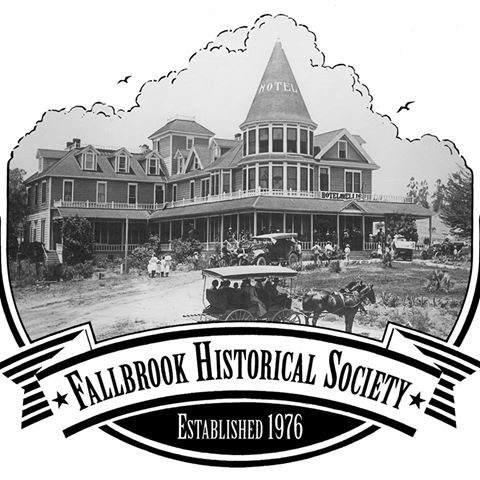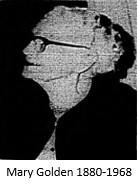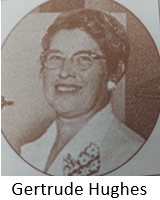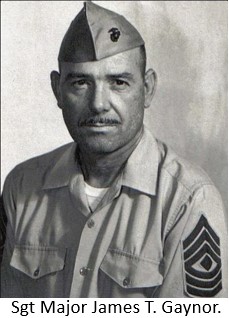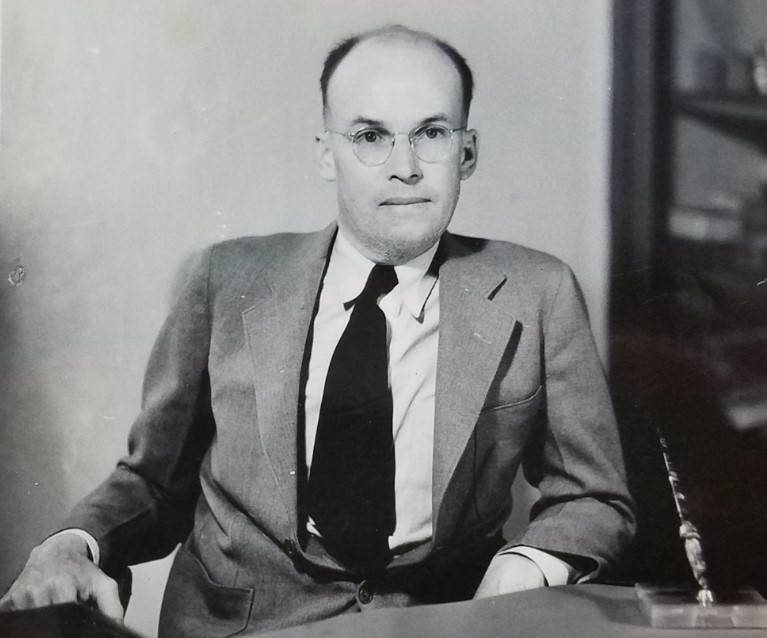The meanings of street names are often obscure, but they are not random. They can reflect the local history and commemorate people and events that are deemed to be important to the local community. Street names can be considered cultural markers of a town and its history.
This is the first installment of street names studied by the Fallbrook Historical Society. More will be added in the future. Comments on these or other street names are welcome.
Alvarado Street: One of the oldest streets in Fallbrook, it is shown on the first official map of West Fallbrook in 1885. This street is named for Ysidro Alvarado and his family, 1846 ranchers and owners of the 33,383-acre Rancho Monserrate. Ysidro Alvarado, the son of a Spanish soldier, was the first settler of European descent in the Fallbrook area. Ysidro, his wife and 3 children are one of the few non-native households listed in the 1860 U.S. Census for this area. More on the Alvarado family and the Rancho Monserrate can be read in the 2020 Spring Historian
Ammunition Road: Beginningat Mission Road, Ammunition leads to and traverses through the Naval Ammunition Depot (NAD). The NAD was opened in 1942 during WWII. In addition to its military personnel, the NAD has been a significant employer of Fallbrook civilians. Inside the military reservation, at the Camp Pendleton side of the NAD, this street is called Fallbrook Road.
Ash St: A small, little-noticed street, it is cut in half by the Pico Promenade. The street is named for Fred Ash, a native of England. Fred Ash was a widower who made his home here in the middle of Fallbrook’s business district, from about 1900 until he died in 1938. The 1926 directory says the Ash residence was 2 doors north of the NW corner of Main & Fallbrook Street, about where Ash Street is today. Fred Ash opened a gas station at the corner of Main Ave & Beech St. when Main Ave was first paved in 1921. Today, 100 years later, in 2022, the Main Street Café is located at Ash’s old gas station.
Brandon Rd. This road is named for Albert Brandon and his family who had their home and a small farm here. Albert Brandon was a Civil War veteran who arrived in Fallbrook prior to 1910. Albert and his sons built the family home in 1911 on the SW corner of today’s Brandon Road and Alvarado. The modernized building still stands. More details are in the article “The Brandons of Brandon Road” .
Burma Road: An unconfirmed story is that some truckers nicknamed this road because of a resemblance to the road that convoys traveled on in Asia during World War II.
Capra Way: Frank Capra was a famous Hollywood director, and Academy award winner. This road led to the Red Mountain Ranch that Capra owned from 1939 until the 1960s. Capra built his retirement home on Red Mountain, frequently entertaining Fallbrook residents and Hollywood celebrities.
Ceramic Lane: Robyn’s Ceramics factory was located on the north side of West Dougherty Street one block west of De Luz or Pico Rd. The factory employed as many as 20 people at a time from 1948 to 1954. Robyn Sikking was a well-known Fallbrook artist who designed ceramic figurines. She and her husband sold the these by mail order and in their gift shop on Main Ave in Fallbrook.
Charles Swisher Court: Charles E. Swisher attended Fallbrook elementary and high schools. He was on the USS Arizona at Pearl Harbor in Dec 1941. Swisher was the 1st Fallbrook boy to die in WWII. The Fallbrook VFW Hall on Old Stage Road is also named after him.
Clemmens Lane: Named forAlbert Clemmens & his family who had their home and a citrus orchard here. Albert Clemmens arrived in Fallbrook with his parents in 1897. He saved money from his job to buy 13 acres here for $5 an acre in 1907. West Clemmens Lane roughly approximates the southern boundary of their property. The family home was located at the NE corner of Clemmens Lane and Alturas Road, across the street from today’s Oddfellows Cemetery. Albert became the first general manager of the Fallbrook Citrus Association in 1916. The whole Clemmens family is buried directly across from their historical home on a plot of land they donated and attached to the Oddfellows.
Dougherty Street: This street is probably named for an early land speculator in West Fallbrook. During the land boom of the 1880s, this area was central to the new town. The name Dougherty is listed as one of the investors of the grand Francis E. Willard hotel in 1887. There is no evidence that Dougherty put down roots here and lived in Fallbrook.
Dulin Road: The Dulin Ranch was here in the early to mid 1900s.
Gird Road: Henry Gird, a Los Angeles rancher, bought 4,590 acres of the middle section of the Monserrate Ranch in 1880 and built the family home here.
Golden Road: Mary E. Golden planted an Avocado Grove here on this property. Born 1880 in England, Mary Golden had been a teacher in Chicago before retiring to Fallbrook. She was an active member of the Fallbrook Woman’s Club, the Red Cross, the AAUW, Fallbrook Friends of the Library, and the Retired Teachers Assn. Golden was a school board trustee for both the Fallbrook Elementary and High Schools simultaneously. She died in 1968 in Fallbrook, at age 88.
Hamilton Road: There was a Hamilton Ranch here from 1919 until the 1960s. Originally settled by George Whitaker and family in 1888, Etta & Jay Hamilton bought the Whitaker property in 1919, renaming it Hamilton Ranch. After Etta Hamilton became a widow, she continued to operate the orchards until the 1960s. She was helped by her son James Hamilton.
Hellers Bend: This section of road took its name from a large billboard that stood here on a curve of U.S. 395, advertising the Hellers grocery store chain that was in San Diego in the 1920s. Prior to 1949, U.S. 395 was a series of S curves that followed Ostrich Creek winding through the low hills south of Fallbrook. Hellers Bend was the notorious scene of many accidents. More information can be found in “The Search for how Hellers Bend got it’s name”
Hughes Lane: Walter & Gertrude Hughes and children came here in 1931 to live on their 10-acre Silver Springs Ranch. Gertrude opened a roadside sandwich shop beside a gasoline pump to serve motorists along Hwy 395. The Silver Springs Café became a popular restaurant to travelers and Fallbrook residents as well. Gertrude Hughes also became Fallbrook’s first florist, selling the flowers that she raised.
James Gaynor Street: Sgt Major James Gaynor USMC, was a veteran of 3 wars; WWII, Korea, and Vietnam. Gaynor, his wife and son lived in Fallbrook. Gaynor was killed in Vietnam in Feb. 1968.
Mackey Drive: Wilbur Mackey (1909-1966) was owner & publisher of the Fallbrook Enterprise from 1955 until his death in 1966. After his death, his wife Marian Mackey continued as newspaper publisher.
Magarian Road: Named for Malcolm G. Magarian, a pioneer real estate developer who put in Fallbrook’s 1st subdivision of 60 homes here in the 1960s. Magarian, an Armenian born in Turkey in 1894, had survived a 1915 massacre of hundreds of Armenians and many of his family before immigrating to the U.S. He served with the U.S. Army Corps of Engineers in Europe during WWI. He came to Fallbrook as part of the construction crew to build Camp Pendleton in 1940. Later, in 1945 he purchased the whole block on the west side of Main Ave from Alvarado to Hawthorne St. A few years later he renovated the whole block, constructing a modern building, known as the ‘Magarian’ building.
McDonald Road: Named for Baylis M. McDonald and family. Bayliss McDonald and his sons owned an 80-acre avocado farm here at the south end of McDonald Rd.
Ohearn Road: Edward J. Ohearn and family had their home and an orchard here. Born in Ohio to Scotch/Irish parents, Ohearn came to Fallbrook in 1919 and died here in 1938. His sons Edward P. and Vince Ohearn became well-known Fallbrook realtors.
Pico Road: Jose Maria Pico was an 1870s rancher and a nephew of the former California governor Pio Pico. Old maps from 1870s show the J.M. Pico home located where Fallbrook High School is today, at about the intersection of today’s Mission Rd & Stagecoach Ln, which was the NW corner of the Rancho Monserrate. The wagon road that passed near Pico’s home stretched north/south between the railroad station at the Santa Margarita River to the Pala Road at the San Luis Rey River. Most of this has since been re-named as Mission Road, except for this short section in the center of Fallbrook still known as Pico Rd. Read more about Pico Road here “2019 Spring Historian”
Potter St: James E. Potter (1894-1947) was Fallbrook’s first school superintendent. In the 1920s, Potter owned several properties surrounding the old high school on Ivy St. where he worked. Presumably he owned a lot here as well. Potter later built a home a few blocks west of here. More information can be found in our featured article: “James E. Potter”
Reche Road: Vital Reche was the first American settler here in 1869 and gave Fallbrook its name when he named his ranch Fall Brook. Reche’s home and store were located around today’s Live Oak Park. Reche Rd. roughly approximates the northern boundary of the Rancho Monserrate which was established in 1846 by Ysidro Alvarado (See Alvarado St.). Vital Reche and his son Charles cleared the wagon road that eventually became Reche’s Road.
Rice Canyon Road: Two brothers, John and Fabian Rice homesteaded here about 1891.
Stewart Canyon Rd: Will Stewart and his family homesteaded this canyon in 1887. Read more on the Steward and Rice families here: “How Stewart and Rice Canyons got their names” .
Tom McGuiness Jr. Circle: Tom McGuiness Jr. was an American Airlines pilot. He died on 9/11 in the first hijacked plane to hit the twin towers. He and his wife had settled in Fallbrook in the 1980s. Their 2 children had attended local schools here before the family moved back to New Hampshire in the year 2000.
Wilt Road: Wilt Road runs near what used to be called the Vernon Wilt Ranch in the 1950s. There is also a side road nearby called Vern Drive. Vernon K. Wilt came to Fallbrook in 1916 with his parents when he was 10 years old. He attended Fallbrook Elementary & High Schools. He graduated from UCLA with a BS in Agriculture in 1936. In 1950 he purchased 2,500 acres of the old Pankey Ranch west of Hwy 395. The Wilt Ranch grew avocados and citrus. V.K. Wilt was on the board of directors of Calavo.
Tom Frew
FHS Historian
